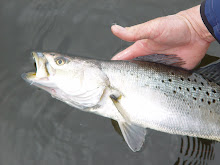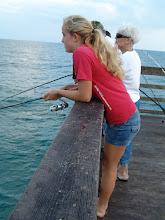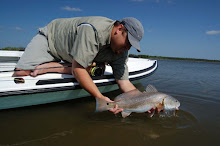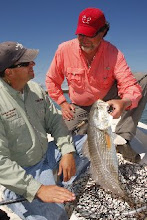
WASHINGTON – It's a scene that scientists say is all too common: A commercial fishing boat pulls in a net full of shrimp or tuna and finds a loggerhead sea turtle mixed in with the catch.
Biologists like Matthew Godfrey say one or two such takings can happen every day among fishing fleets off the Southeast coast. Those numbers can add up to thousands annually for a turtle species that has traveled the oceans for 200 million years but now faces a growing array of threats.
Godfrey is among the authors of the latest federal report on loggerheads that says most groups of the ancient reptile are at risk of extinction — in large part due to increased commercial fishing.
The study, released last month, predicted broad population declines across the globe in the coming years, including in a nesting area along the southeastern United States that is one of the world's largest.
"Unfortunately, a lot of times the target fish habitat and the turtle habitat overlap," said Godfrey, of the North Carolina Wildlife Resources Commission. "The turtles are air breathers, so they need to get to the surface, but if they're tangled up in the net, they can't get to the surface, and they essentially drown."
Loggerheads have been listed as a threatened species since 1978. This latest report puts new pressure on the government to upgrade their status to endangered and further restrict commercial fisheries.
But even the increased awareness that an endangered listing would bring might not save the turtles, which migrate thousands of miles through the sea.
Meaningful protections require broad global cooperation given the turtles' far-flung travels. Fishing operators already are chafing under regulations aimed at protecting the animals, and further restrictions could draw strong opposition and fresh concerns about hurting coastal economies.
"These trends are very difficult to reverse. It's like turning a big battleship," said Blair Witherington, a research scientist with the Florida Fish and Wildlife Conservation Commission who helped write the report. "We really ought to be doing it now."
The report was commissioned by the National Marine Fisheries Service as a result of petitions from environmental groups, who say the government is moving too slowly to protect loggerheads and have sued to force stronger actions. Many of the study's authors work for the federal agencies that will decide whether to change its status to endangered.
For the first time, the study called for dividing loggerhead populations into nine distinct global populations, a potentially key recommendation that would allow each to be studied and protected as a separate species.
It said seven of those nine populations are in danger of extinction, including two along U.S. coasts: the major population in the Atlantic Ocean, which has nesting concentrated along the coasts of Florida, Georgia and the Carolinas, and a smaller population that migrates through Pacific waters off the West Coast and Hawaii.
Aside from fishing, the report said other major threats include coastal development that disrupts nesting, such as erosion-control barriers and other structures that prevent mothers from nesting and bright lights that can disorient hatchlings. The animals and their eggs are also still hunted for consumption in some parts of the world, the report said, and will probably be threatened by changing sea levels from climate change, which could wash away nesting habitats.
The U.S. and other countries already have adopted a number of protections, but the report said their effectiveness has been incomplete.
Since the mid-1990s, shrimp trawlers have been required to use gear that allows turtles to escape, for example. But the National Marine Fisheries Service has estimated that nearly 650 turtles a year are still killed by shrimpers in the U.S. Gulf of Mexico.
In April, federal regulators restricted the use of long fishing lines for catching red grouper off Florida's western coast after studies showed that as many as 800 loggerheads were caught by the lines every 18 months. The temporary ban, from mid-May to mid-October — when sea turtles feed in the warm Gulf waters — angered fishing operators, who said it could kill their business.
"I don't know what else they could expect us to do," said Woody Moore, a commercial fisherman out of Jacksonville, Fla., who said he thinks the dangers posed by fishing fleets are exaggerated.
"I've never in my life caught a dead one," he said. "And I've been fishing 30 years."
"I've never in my life caught a dead one," he said. "And I've been fishing 30 years."
Elizabeth Griffin, fisheries campaign manager at Oceana, an advocacy group that has sued the government to protect loggerheads more aggressively, acknowledged that significant steps have been taken but said the turtles remain largely unprotected in the water.
She said the United States, which hosts about 90 percent of loggerhead nesting off the Atlantic Ocean, should heed its own scientists' advice. "We're a key player in preventing loggerheads from going extinct in the Atlantic so we really need to be a leader on this issue," Griffin said.
Therese Conant, deputy director of the Fisheries Service's endangered species division and another of the report's authors, said the government would probably issue a proposed decision in February on whether to change the turtles' status.








.jpg)








